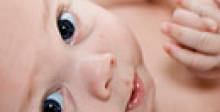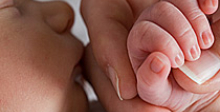Internal mini form
Contact Us Today
A parent is likely to notice when a child doesn’t roll over when he or she should, or when an infant is not enjoying a first step. When this occurs, it could mean the child is slow to develop, or it could be a sign of developmental delay. Developmental delay is an indicator that a child may have Cerebral Palsy.
In the event a child has developmental delays, a number of interventions will help a young person develop their skill set, and their confidence, into adulthood.
What is developmental delay?
Doctors look for visible signs of brain injury when they evaluate children for Cerebral Palsy. Development delay, which occurs when an infant does not reach a milestone at the expected time, is often the first sign in most children. Doctors will also look for anatomic signs, such as evidence of excessively stiff or loose limbs. Radiological signs of Cerebral Palsy are visible in the brain through neuroimaging techniques like MRIs, CT scans, and cranial ultrasound.
Certain milestones are reached at predictable times. Reaching these milestones later than expected does not necessarily indicate cause for concern; many infants develop at their own pace. However, delay does suggest the possibility of a problem, especially when combined with other risk factors and anatomic or radiological signs.
Examples of milestones important for motor development include:
- Reaching for toys at three to four months
- Rolling onto back at around four months
- Sitting without assistance at six to seven months
- Smiling at around six weeks
- Walking at 10 to 14 months
If developmental delay is suspected, the ensuing evaluation is broken into two parts:
- Developmental evaluation is performed by a specialist, such as a developmental psychologist, developmental pediatrician, or pediatric neurologist. It is a very thorough exam used to determine whether the child is lagging behind. Tests may be performed at this stage to rule out conditions, or to diagnose.
- Developmental screening is used to detect whether possible impairment of the child’s development exists. Doctors ask parents questions and interact with the child to gauge capabilities, reflexes and responses. If delay is detected, the process moves onto the second part.
Failure to thrive is a condition diagnosed when the child does not meet age and weight appropriate standards. Failure to thrive often describes children who fall below the third to fifth percentile in weight, or a child who experiences an extreme decrease in his or her growth rate. The child could have a digestive or dietary concern, or an orthopedic condition which makes it difficult to swallow or consume foods properly.
Anatomical signs
Cerebral Palsy often affects limbs. Signs, although not always present early in an infant’s life, may appear as the child develops. Doctors look for impairment of a child’s limbs, usually in the form of hypertonia or hypotonia. Other signs include impaired torso support and control, difficulty in balancing, and infant reflexes that either do not develop, or persist after they should have disappeared.
Radiological signs
Cerebral Palsy is caused by an injury to the brain. The injury or malformation is detected through modern neuroimaging techniques. Cranial ultrasounds can be used on extremely young infants but are not as reliable as CT scans and MRIs (although the latter requires infants to lie still, which can be problematic). As many as 83% of children with Cerebral Palsy will present with a detectable injury to the brain. Radiological exams can be an important step in diagnosing Cerebral Palsy.

Developmental milestones
Developmental milestones are the points in time when a child learns to accomplish a specific task. A significant delay in reaching developmental milestones is often the first indicator a child may have Cerebral Palsy.
Although children grow and develop at their own pace, these milestones are established to mark the average age moments most children learn the specific task. Reaching these milestones late is a sign that a child may have Cerebral Palsy or another development disability, especially if other signs are present. These should be discussed with a child’s doctor.
Developmental Milestone Charts
Click on a condition listed below to learn more.
- By the end of 2 months (PDF)
- By the end of 4 months (PDF)
- By the end of 6 months (PDF)
- By the end of 9 months (PDF)
- By the end of 1 year (PDF)
- By the end of 18 months (PDF)
- By the end of 2 years (PDF)
- By the end of 3 years (PDF)
- By the end of 4 years (PDF)
- By the end of 5 years (PDF)









